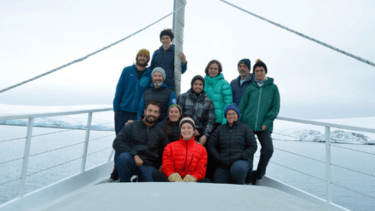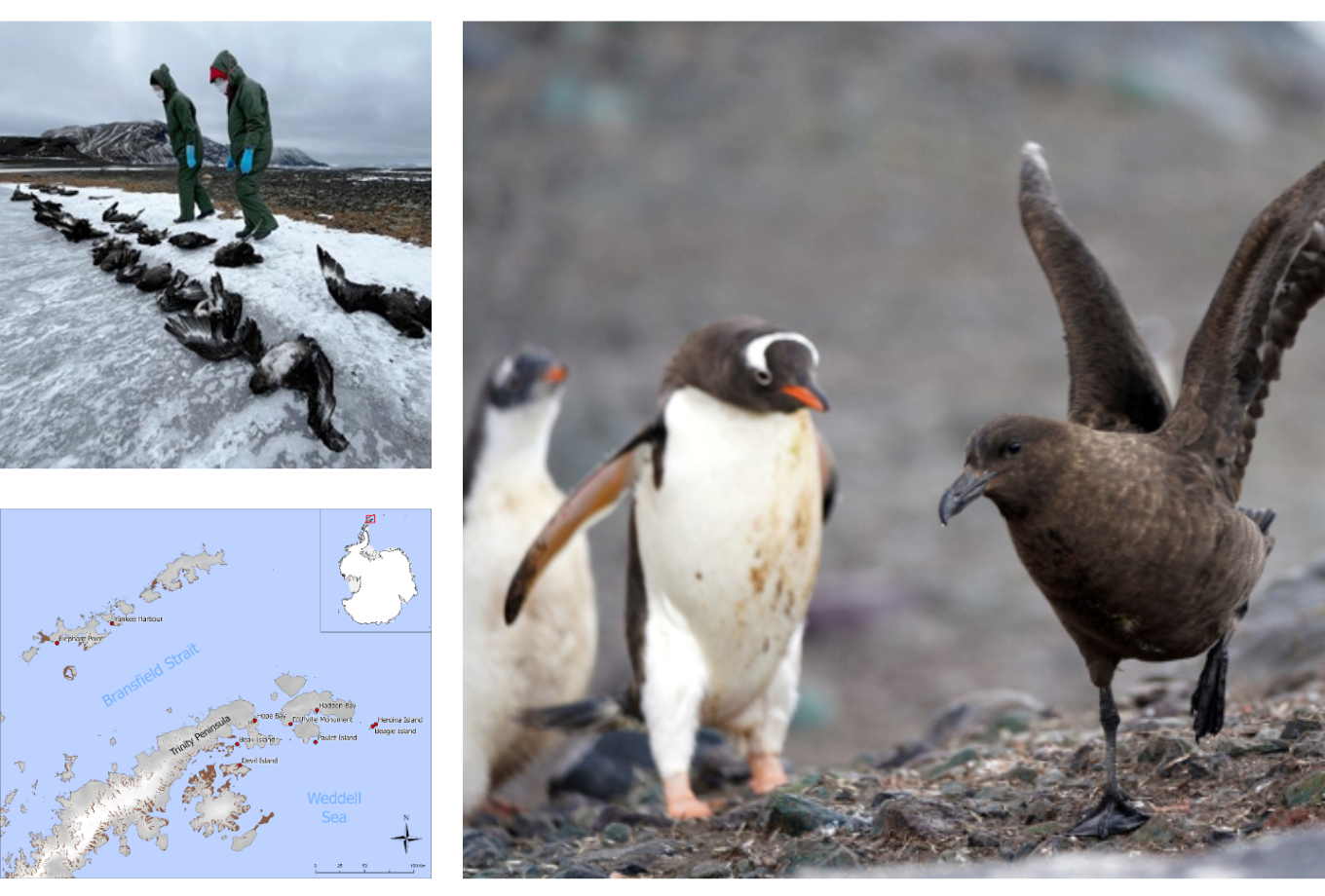International team of scientists determine further spread of HPAI in the Antarctic Peninsula region

Sponsored by

An international team of scientists examining the presence and impact of High Pathogenicity Avian Influenza of the H5 subtype (HPAIV H5) infections on Antarctic wildlife have identified further spread of the virus in the Northern Weddell Sea area of Antarctica.
The team found that so far skuas have been the most severely affected species, and the high mortality levels detected show there may be long-term consequences for their conservation at the regional level. The expedition, primarily funded by the International Association of Antarctica Tour Operators (IAATO), as well as the EU Horizon Europe project Kappa-Flu* and the Spanish National Research Council (CSIC), set out to investigate the region of the Trinity Peninsula and the Northern Weddell Sea on the 13th of March.
The current HPAIV H5 of interest initially evolved in poultry but has recently adapted to better spread in wildlife. Since 2020, its unprecedented spread has caused significant mortalities of wild birds and mammals on an almost global scale. Following the arrival of HPAIV H5 to South America by the end of 2022, its arrival to Antarctica was predicted to occur in subsequent years, and finally confirmed in February 2024.
There are great concerns on its effects on wildlife populations in Antarctica specifically, as several species are already classified from near threatened to critically endangered. In addition, the high wildlife mortality, as observed on other continents like South America, could easily go unnoticed here due to the remoteness and limited accessibility for regular surveillance of the Antarctic continent. ‘For this reason, setting up surveillance tools that are feasible within an Antarctic context could help in monitoring HPAIV H5 impact in upcoming years’, Federation University’s Meagan Dewar, leader of the expedition, stated.

The specialists involved in this expedition were multidisciplinary, involving biologists, wildlife veterinarians, virologists and a seasoned Antarctic sailing crew (1). This team was well equipped to move fast from suspicion to sampling, and testing. They set out to investigate the region of the Trinity Peninsula and the Northern Weddell Sea, an area where previous surveillance efforts by National Antarctic Programs had been limited, but where the SCAR’s (Scientific Committee on Antarctic Research) - Antarctic Wildlife Health Network (AWHN) had received notifications from researchers, ornithologists and the general public on potential mortality events or disease in wildlife. Once at the location, the team performed a preliminary assessment of sick individuals or unusual wildlife mortality (2), and then set out to collect samples for HPAIV H5 testing.
In addition to collecting non-invasive samples from sick or ill individuals, hundreds of faecal samples were also collected from seemingly healthy animals, to investigate virus prevalence in those. Additionally, air and water samples were collected and will help determine virus presence in the environment.
A compact diagnostic laboratory set up on the vessel specifically for this expedition (3), allowed the team to use state-of-the-art methods to test inactivated virus samples to then detect HPAIV H5 and sequence the genome. This on-ship testing, never performed before, represents a remarkable logistical advancement for HPAIV H5 surveillance in the Antarctic region, as confirmation did not depend on time-consuming shipment of samples to far off testing sites.
During the expedition, the team surveyed 10 wildlife-dense areas located between the South Shetland Islands, the Northern Weddell Sea and the Danger Islands (see map; 4). The presence of HPAIV H5 was confirmed by multiple laboratory tests (H5-specific RT-qPCR and sequencing of the multibasic protease cleavage site characteristic for HPAIV) in skua carcasses at four landing sites (Hope Bay**, Devil Island, Paulet Island and Beak Island). Virus was detected in several sample types including the brain, suggesting neurotropism of the HPAIV H5 infection in this species.
Of the sites visited, Beak Island stood out, as it has a large skua breeding colony. While 80 live skuas were present here at the time of the visit, more than 50 skuas were found dead. Of these 50 skuas (involving Brown Skuas and South Polar Skuas), 10 were tested and all 10 were confirmed positive for HPAIV H5. In one other site (Heroina Island), unusually high numbers of skua carcasses were also detected, however the virus could not be detected in those carcasses. Besides skua mortality, at two sites (Heroina Island and Beagle Island), the team detected an unusually high number of dead Adélie penguins. At Heroina’s main landing site, just a small proportion of the island, 532 Adélie carcasses were counted, of which a substantial number (172) were adults. Extrapolating these counts to the other sites of the island where the carcasses were also detected but not counted, mortality must have been several thousands. This high number, as well as the detection of so many adult carcasses, suggests an unusual mortality event had occurred here. Although the team suspected this to be caused by HPAIV H5, virus presence was not confirmed, and further testing will be undertaken in the coming months to determine the cause of death.

Samples of apparently healthy wildlife as well as an additional set of samples from carcasses will be tested soon at the institutes involved, using multiple additional techniques. These further analyses aim to acquire more information on virus presence in seemingly healthy animals and the genetics of the viruses detected. These data will help to understand how the virus has spread over time and place. In addition, tissues from infected carcasses will be analysed to understand how the virus causes disease and death and help to understand which tissues are best suited for virus detection.
Participants of the Expedition:
- Meagan Dewar, Future Regions Research Centre, Federation University Australia
- Anne Günther, Friedrich-Loeffler-Institut, Germany
- Antonio Alcamí, CSIC (Spanish National Research Council), Spain
- Begoña Aguado, CSIC (Spanish National Research Council), Spain
- Florencia Soto, Instituto de Biología de Organismos Marinos (IBIOMAR-CONICET), Argentina
- Lineke Begeman, Viroscience, Erasmus Medical Center, the Netherlands
- Matteo Iervolino, Viroscience, Erasmus Medical Center, the Netherlands
- Ralph Vanstreels, Karen C. Drayer Wildlife Health Center (Univ. of California - Davis), Argentina
- Ben Wallis, Ocean Expeditions Research Support Vessel S/V Australis
- Alice Reade, Ocean Expeditions Research Support Vessel S/V Australis
- Adam Coerper, Ocean Expeditions Research Support Vessel S/V Australis
Looking to further your research career in hydrogen and renewable technologies? Contact Assoc Prof Sharma today at surbhi.sharma@federation.edu.au.